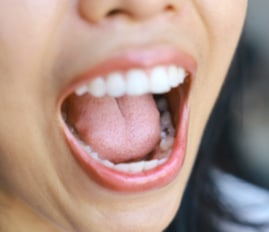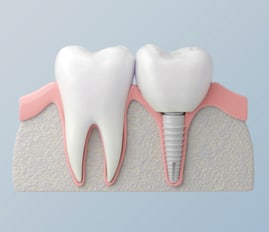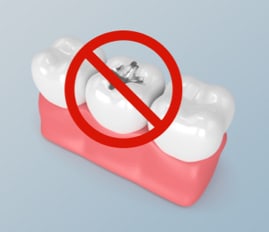Living with temporomandibular joint disorder (TMD) can be both uncomfortable and unpredictable, as symptoms vary greatly from person to person. Some individuals may experience mild discomfort that resolves within a few weeks, while others endure persistent discomfort and jaw dysfunction for months or even years. The duration of TMJ disorder depends on factors such as stress levels, posture, and the severity of the condition.
Identifying the right approach to relief can be challenging, as the TMJ’s causes range from teeth grinding to joint misalignment. If you or someone you know is dealing with TMJ disorder, read on to gain a deeper understanding of the condition and potential strategies for relief.
Understanding TMJ Disorder
TMJ stands for the temporomandibular joint, which connects the jawbone to the skull. These joints are important for basic functions like chewing, speaking, and even yawning. When these joints or the surrounding muscles become inflamed or misaligned, this can lead to TMJ disorder, which affects people of all ages.
Causes of TMJ Disorder
Pinpointing the exact cause of a TMJ disorder can be tricky, as it often develops due to a combination of factors. Common causes include:
- Teeth grinding and jaw clenching: Stress-induced teeth grinding (bruxism) or clenching places undue pressure on the jaw joining and surrounding muscles, which can lead to TMD.
- Joint injury or arthritis: Physical trauma or degenerative conditions like arthritis can damage the temporomandibular joint over time, causing inflammation and discomfort.
- Poor posture: Occupational posture, such as leaning forward while working at a desk, can misalign the neck and jaw, contributing to TMJ issues.
- Lifestyle habits: Nail-biting, excessive gum chewing, or other habits may worsen joint strain.
Understanding these root causes is important for managing and addressing the condition. A professional evaluation is often the first step in gaining insight into your specific situation.
How Do You Know If You Have TMJ Disorder?
Recognizing the signs of TMJ disorder early can improve treatment outcomes. Symptoms to look out for include:
- Persistent jaw discomfort or tenderness
- Difficulty chewing or opening your mouth fully
- Clicking, popping, or grating sounds when you move your jaw
- Misaligned bite (malocclusion)
- Swelling on the sides of the face
Some individuals might also notice secondary symptoms like headaches, dizziness, or ringing in the ears.
Factors Affecting How Long TMJ Disorder Lasts
The duration of TMJ disorder varies from person to person. While some people may experience temporary discomfort, others may face more prolonged issues. The following factors can influence the longevity of symptoms:
Severity of Symptoms
Milder cases of TMJ disorder often resolve within weeks, whereas more serious cases with chronic discomfort or locked jaw issues tend to last longer.
Underlying Causes
TMJ caused by reversible factors such as stress or posture often resolves quickly with lifestyle adjustments. TMJ resulting from arthritis or joint trauma may require more long-term management.
Treatment Approach
Proactive treatment can help to shorten the duration of TMJ symptoms. Options such as physical therapy, dental splints, and relaxation techniques may help to restore joint function and ease discomfort.
Lifestyle Factors
Teeth grinding, clenching, or maintaining poor posture may prolong symptoms. Addressing these habits through mindfulness or stress-relief exercises often yields noticeable improvements.

Effective Treatments for TMJ Disorder
The good news is that TMJ disorder is treatable. Options range from self-care to medical and surgical solutions, depending on the condition. Here are some potential options for managing TMJ:
Self-Care Strategies
Here are some self-care strategies to help mitigate symptoms:
- Use ice packs to reduce inflammation
- Opt for soft foods to minimize strain on your jaw
- Avoid extreme jaw movements like wide yawning or gum chewing
- Practice relaxation and stress management techniques
Medications and Neuromodulators
Over-the-counter pain relievers or anti-inflammatory medications can help provide relief for mild to moderate symptoms. A dentist may also prescribe muscle relaxants for more serious cases.
In other cases, your dentist may recommend Botox or other neuromodulators.
Physical Therapy
Working with a physical therapist to perform exercises can strengthen jaw muscles and improve mobility can help restore function over time.
Dental Splints or Mouth Guards
Custom-made dental devices can help minimize the effects of teeth grinding and clenching at night, easing pressure on the jaw joint.
Dental Surgery
Surgical intervention is typically considered to be a last resort option for TMJ disorder. Here are a few surgical options:
- Arthrocentesis: A procedure using a needle to flush out the joint.
- Arthroscopy: A thin tube with a camera used to diagnose and treat joint inflammation or scarring.
- Open Joint Surgery: Involves accessing the joint via a larger incision to address structural damage.
Is It Time to Seek Professional Help?
Persistent TMJ discomfort can affect your quality of life and overall well being. If you’ve exhausted home remedies or your symptoms are worsening, it may be time to seek professional help. At Health First Dental, our team specializes in diagnosing and treating TMJ disorder. Don’t hesitate to book an appointment today.












